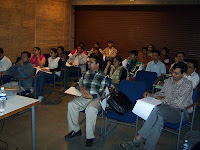The Internet has had a relatively brief, but explosive history. It grew out of an experiment begun in the 1960s by the U.S. Department of Defence.
The DoD wanted to create a computer network that would continue to function in the event of a disaster, such as a nuclear war.
If a part of the network was damaged or destroyed, the rest of the system still had to work. That network was ARPANET, (Advanced Research Projects Agency Network) which linked U.S. scientific and academic researchers. It was the forerunner of today's Internet.
In 1985, the National Science Foundation (NSF), an American research organization, created NSFNET, a series of communication networks. Based on ARPANET protocols, the NSFNET created a national backbone service, provided free to any American research and educational institution. At the same time, regional networks were created to link individual institutions with the national backbone service.
NSF also coordinated a service called InterNIC that registered all addresses on the Internet so that data could be routed to the right system.
More information about the History Of Internet can be found here: http://www.isoc.org/internet/history/brief.shtml
















